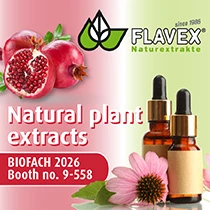Beyond the surface: “Skinification” expands with beauty-from-within boom

“Skinification” has expanded from a trend incorporating skin care ingredients across makeup, hair care, and other cosmetics to the beauty-from-within space. Companies are implementing skinification techniques to address the consumer demand for anti-aging solutions that go beyond reducing wrinkles and instead focus on looking good by feeling good.
Personal Care Insights sits down with industry leaders from Gencor, Monteloeder, FrieslandCampina, and Balchem to deep-dive into skinification trends, ranging from ingredients to innovations.
The major industry players deem multifunctionality, personalization, hybrid solutions, supplements, and holistic hair care to be especially fast-moving.
Mariana Ortega, science marketing manager at Monteloeder, says: “Antioxidant-rich botanicals, polyphenols, ceramides, and bioactives that help counteract oxidative stress are among the most in-demand.”
She further explains that the driving force of skinification is the desire for visible, long-term benefits that go beyond the surface, where internal wellness is seen as the foundation for external radiance.
Maggie McNamara, VP of global marketing at Gencor, adds that consumers are increasingly seeking multifunctional products enriched with active ingredients.
“They desire science-backed efficacy, minimalist ingredient lists, and products that promote holistic wellness. They want products that not only enhance their appearance but also support their overall skin health,” says McNamara.
 FrieslandCampina Ingredients says the gut-skin axis is one of the most exciting areas of development.Skinification innovation
FrieslandCampina Ingredients says the gut-skin axis is one of the most exciting areas of development.Skinification innovation
Future innovations in skinification will not be scarce, according to the industry experts. The spotlight is directed on the gut-skin axis, solutions for overall health, and lab-grown ingredients.
Sophie Zillinger Molenaar, global marketing lead at FrieslandCampina Ingredients, says the gut-skin axis is one of the most exciting areas of development.
“Emerging research continues to reveal a bidirectional relationship between our gut microbiome and overall health, highlighting how the gut microbiome has an influence far beyond digestion, impacting skin health too. These advancements have allowed traditional gut-supporting ingredients like biotics to make their way into the skin care space,” says Zillinger Molenaar.
She explains that developing research is helping brands tap into fresh opportunities while providing solutions for common skin concerns like acne and eczema. “While most microbiome innovation in beauty has focused on topical products, we expect to see more innovation in ingestible alternatives that support skin care starting from the gut.”
McNamara from Gencor adds that the skinification trend has inspired several notable innovations, such as multifunctional formulations and the development of products that integrate multiple benefits, such as moisturization, anti-aging, and sun protection, into single applications.
She further details biotech-driven ingredients, such as lab-grown ingredients, which offer sustainable and ethical alternatives to traditional components. These ingredients are also safe for sensitive skin and microbiome-focused products.
“These innovations are redefining the boundaries of skin care, offering consumers advanced solutions that cater to a holistic approach to beauty,” she adds.
 Consumers are searching for a holistic approach to beauty.Beauty inside and out
Consumers are searching for a holistic approach to beauty.Beauty inside and out
Botanical supplements are gaining traction for beauty consumers as they seek a complete process rather than solely an application to the skin.
Ortega from Monteloeder highlights botanicals as some of the most meaningful innovations. She says the rise of clinically supported ingredients explicitly designed for supplementation that influence the skin’s appearance and resilience from within is one of the main innovations, as are products that may help the body mitigate the impacts of environmental aggressors such as pollution.
“These innovations reflect a shift from reactive beauty to preventive, holistic strategies, supporting the skin at its deepest levels,” says Ortega.
Jessica Arnaly, senior marketing and business development manager at Balchem, adds that skinification trends are about achieving a glow that comes from feeling good on the inside, and that it’s changing how people think about beauty.
“We’re already seeing beauty routines expanding beyond topical solutions like creams and serums, to include supplements such as gummies or capsules that nourish the skin from the inside out,” she says. “It’s not just about the usual surface-level, facial concerns like wrinkles or fine lines anymore.”
Arnaly continues that supplements are increasingly becoming popular for skin treatments, such as teenage acne or healthy aging — especially those containing on-trend ingredients such as collagen, vitamin C, and vitamin E.
“At the same time, carotenoids and fatty acids are gaining momentum for their skin-nourishing properties, while hyaluronic acid remains a favorite for its hydrating effects, enhancing skin moisture from within,” says Arnaly.
She adds that one powerful ingredient that holds great potential for this new realm of skinification is methylsulfonylmethane, a source of organic sulfur and an essential structural component of the building blocks of connective tissues that support healthy skin and hair.
 Balchem says the haircare segment feels the impact of skinification, with a growing focus on the scalp.Skinification’s hybrid solutions
Balchem says the haircare segment feels the impact of skinification, with a growing focus on the scalp.Skinification’s hybrid solutions
Looking forward, the skinification trend is poised to further integrate into hair care, personalized skin care, and ingestible beauty.
Arnaly from Balchem says the hair care segment is poised to feel the impact of skinification, with a growing focus on the scalp. Consumers are already beginning to see the scalp as an integral part of the skin microbiome, which is driving brands to emphasize incorporating ingredients that promote scalp nourishment.
Ortega adds that skinification is rapidly evolving from a topical trend into a holistic beauty approach, where internal and external care work harmoniously.
“We expect to see a growing number of hybrid routines that start with inner support through targeted supplementation, and are complemented by smart, minimal topical solutions. Consumers are no longer looking for isolated products but coherent systems supporting skin health at multiple levels,” says Ortega.
 Gencor highlights niacinamide, which is known for its ability to improve skin texture.Deep dive into ingredients
Gencor highlights niacinamide, which is known for its ability to improve skin texture.Deep dive into ingredients
A trending ingredient used in the skinification trend includes palmitoylethanolamide It is featured due to its anti-inflammatory and mast cell protective properties. It targets skin imperfections such as blemishes and redness, enhances skin elasticity, and diminishes oxidative stress-related damage, resulting in a youthful appearance.
McNamara further highlights the use of niacinamide, known for its ability to improve skin texture, reduce inflammation, brighten skin tone, and strengthen barrier effects; hyaluronic acid, for its deep hydration; ceramides, which are essential for restoring and maintaining the skin’s natural barrier; and peptides, which promote collagen production and enhance skin elasticity.
She also says vitamin C’s antioxidant properties help brighten the skin and combat oxidative stress, making it a staple for various beauty products. Lastly, pre- or postbiotics to support microbiome health for the entire body.
Arnaly adds that exciting new research explores how ingredients can be combined to leverage potential synergies.
“Collagen, for example, has long been the undisputed superstar of skin care, but with so many products out there, brands are now looking for new ways to stand out and differentiate their offering, such as pairing it with complementary nutrients.”













